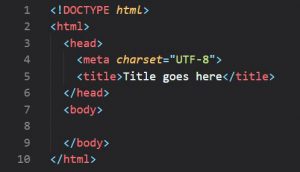
All things need structure, including web pages. There is a specific language in coding that ensures that all web pages have a structure to them. As we have learned, there are three components to making a successful website. There’s CSS, HTML, and Javascript. HTML displays the content, while CSS ensures that everything looks good. Then, Javascript adds the interactivity that all webpages need to be successful. So, which one adds the structure? HTML is in charge of adding structure to the web pages. HTML is the foundation for all web pages, laying out the contents of the website. For example, a blog type of website needs to be structured with headings, posts, comments, etc. Without HTML the website would all be in plain text with no structure whatsoever. Obviously, that completely takes away from the point of a blog, so it’s important to have HTML lay out the foundation of the website. Then, CSS can go in and work its magic to make everything look pretty. Lastly, Javascript can add interactivity. So, without structure, websites would not be successful. Therefore, it’s important to have HTML.
Image link: https://medium.com/@cortneythomas/laymans-coding-what-is-the-minimum-html-you-need-for-a-website-eda987b02622
Hey, Kayla. I agree with you on the fact that everything needs structures or some sort of process, as we learned in the class that it makes everything more efficient and faster.
Hey Kayla! Your emphasis on HTML and what it provides was pretty eye opening to me. HTML is so boring and dull and I never really paid attention to it. But after this class and your blog post I learned how essential it was. By having structure in place (through HTML), we can then use CSS and Javascript to make great websites that not only look pretty but also keep us engaged by being interactive.